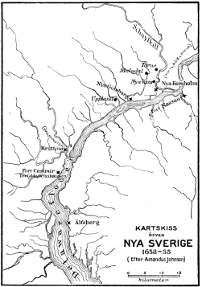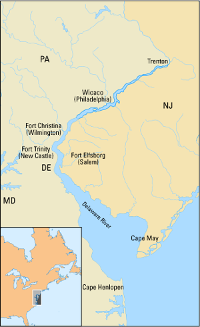Sweden was one of the major powers in Europe in the early 17th Century and was one of the major combatants in the Thirty Years' War, which raged from 1618 to 1648. In 1637, investors from Germany, the Netherlands, and Sweden formed the Sweden South Company, with the express purpose of forming a colony in the New World. Swedish traders had been in the area for a number of years. The first settlement expedition–consisting of people from Finland, the Netherlands, and Sweden–left Gothenburg, Sweden, in 1637, under the command of Peter Minuit, who had been director-general of the Dutch colony New Netherland a few years earlier. The two ships, the Fogel Grip and the Kalmar Nyckel, arrived in what is now Wilmington, Del., in March 1638, at a spot that is still called Swedes' Landing. The settlers built Fort Christina, naming it after the 12-year-old Swedish royal princess. 
That was the first of more than a dozen expeditions, carrying nearly 600 settlers, from Sweden to North America in the next two decades. The new residents of New Sweden lived along both banks of the Delaware River in what is now Delaware, Maryland, New Jersey, and Pennsylvania. 
Johan Printz was governor of the colony for a decade, from 1643 to 1653, during which time the colony prospered. Under his leadership, the settlers built Fort Elfsborg. Johan Rising became director in 1654. He was the colony's last man in charge. Rising and a group of men took over the Dutch Fort Casimir and renamed it Fort Trinity. The New Netherland director-general, Peter Stuyvesant, was so incensed that he led an armed invasion force down the Delaware River and not only retook Fort Trinity but also took over Fort Christina and the rest of the Swedish colony. This was in 1655. Stuyvesant decreed that the colony could continue as its own entity, with religious freedom and a court and militia of their own choosing. The independence continued until 1681, when England's King Charles II approved William Penn's charter for the Pennsylvania territory, which included what had once been New Sweden. |
|
Social Studies for Kids
copyright 2002–2025
David White




